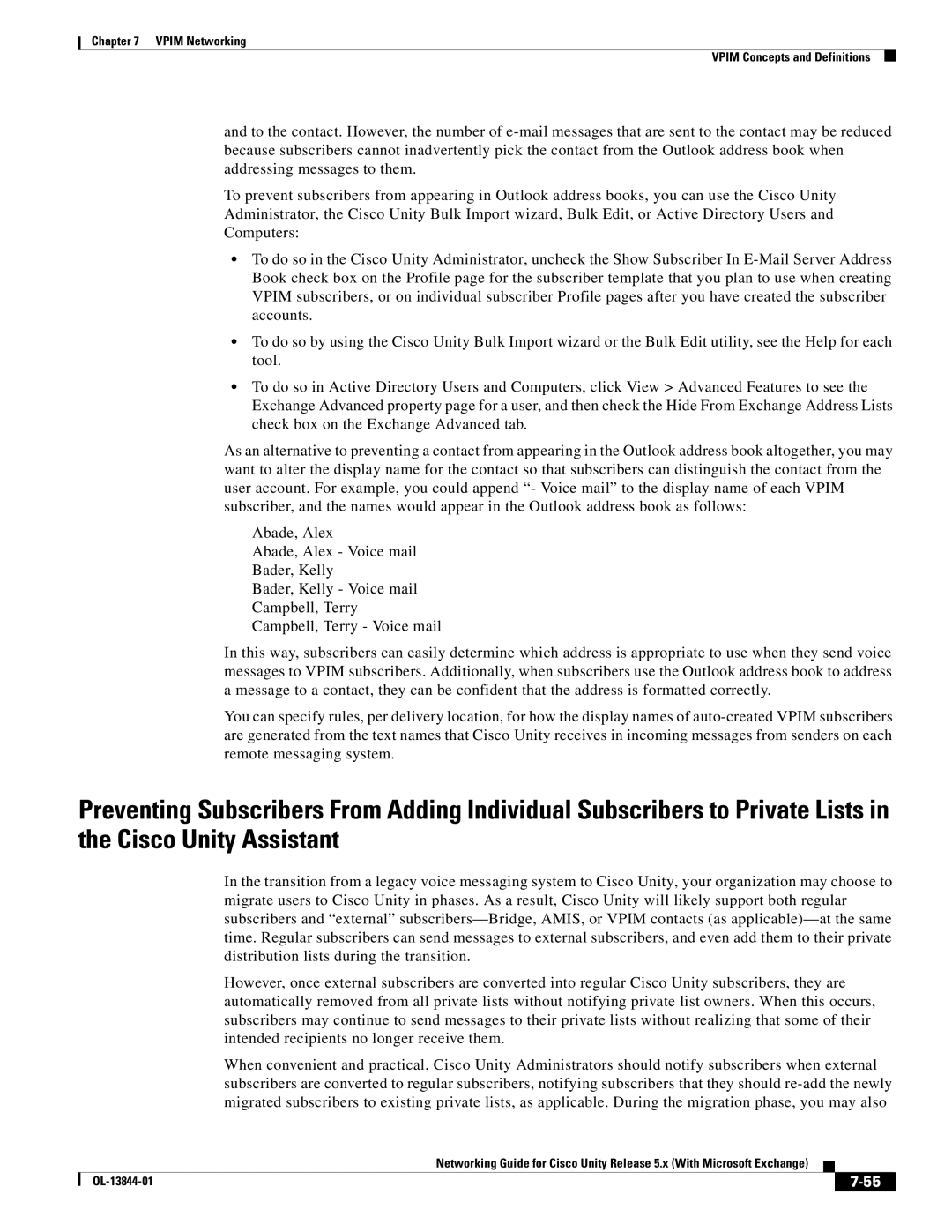Chapter 7 VPIM Networking
VPIM Concepts and Definitions
and to the contact. However, the number of
To prevent subscribers from appearing in Outlook address books, you can use the Cisco Unity
Administrator, the Cisco Unity Bulk Import wizard, Bulk Edit, or Active Directory Users and
Computers:
•To do so in the Cisco Unity Administrator, uncheck the Show Subscriber In
•To do so by using the Cisco Unity Bulk Import wizard or the Bulk Edit utility, see the Help for each tool.
•To do so in Active Directory Users and Computers, click View > Advanced Features to see the Exchange Advanced property page for a user, and then check the Hide From Exchange Address Lists check box on the Exchange Advanced tab.
As an alternative to preventing a contact from appearing in the Outlook address book altogether, you may want to alter the display name for the contact so that subscribers can distinguish the contact from the user account. For example, you could append “- Voice mail” to the display name of each VPIM subscriber, and the names would appear in the Outlook address book as follows:
Abade, Alex
Abade, Alex - Voice mail
Bader, Kelly
Bader, Kelly - Voice mail
Campbell, Terry
Campbell, Terry - Voice mail
In this way, subscribers can easily determine which address is appropriate to use when they send voice messages to VPIM subscribers. Additionally, when subscribers use the Outlook address book to address a message to a contact, they can be confident that the address is formatted correctly.
You can specify rules, per delivery location, for how the display names of
Preventing Subscribers From Adding Individual Subscribers to Private Lists in the Cisco Unity Assistant
In the transition from a legacy voice messaging system to Cisco Unity, your organization may choose to migrate users to Cisco Unity in phases. As a result, Cisco Unity will likely support both regular subscribers and “external”
However, once external subscribers are converted into regular Cisco Unity subscribers, they are automatically removed from all private lists without notifying private list owners. When this occurs, subscribers may continue to send messages to their private lists without realizing that some of their intended recipients no longer receive them.
When convenient and practical, Cisco Unity Administrators should notify subscribers when external subscribers are converted to regular subscribers, notifying subscribers that they should
|
| Networking Guide for Cisco Unity Release 5.x (With Microsoft Exchange) |
|
| |
|
|
| |||
|
|
|
|
| |
|
|
|
| ||
